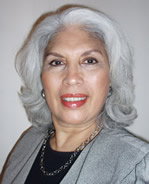|
Do You Live in an Apartment With Secondhand Smoke? By: Ofelia Alvarado, Policy Manager American Lung Association
Is this happening to you? Do the symptoms of asthma get worse for your child when your neighbor smokes? Secondhand smoke coming from someone smoking in their apartment or balcony is not only a nuisance, but is a toxic contaminant. Exposure to the toxins in secondhand smoke affects your health similar to asbestos. What is Secondhand Smoke? Secondhand smoke is the smoke from the burning end of a cigarette, pipe, or cigar including the smoke exhaled by a smoker. It drifts into your apartment through open windows and doors. It travels through shared air and heating vents, and seeps into walls, cracks, electrical sockets and pipes. In this manner, secondhand smoke can reach your child’s bedroom and expose them to the poisons in secondhand smoke. Secondhand smoke toxicants are very concentrated and dangerous with no safe level of exposure. How does Secondhand Smoke harm your health? A number of reports released by the United States Surgeon General alerted the nation on the health risk of smoking for both smokers and nonsmokers. These reports were initiated after the release of The Health Consequences of Smoking, A Public Health Service Review in 1967. In 2006, Surgeon General, Richard H. Carmona reported on the consensus by the science community that no safe level of exposure to secondhand smoke exists. People exposed to secondhand smoke at home or work have a 25-30% higher risk of cardiac disease, and 20-30% higher risk of lung cancer. This finding is of great concern to public health since more than half of the nonsmoking US population is still being exposed to secondhand smoke on a regular basis. Children have very sensitive respiratory systems, and are more vulnerable to the effects of secondhand smoke. Children exposed to secondhand smoke can get ear infections, colds, asthma, bronchitis, and other ailments more often. Anyone with asthma can experience wheezing, coughing, and shortness of breath from the toxins in secondhand smoke. The developing lungs of a child are more susceptible to the damage caused by the toxins in secondhand smoke. Even a single brief exposure can cause asthmatic children to have an attack. Seniors with chronic diseases such as diabetes, cancer, heart and lung disease are at risk of worsening their condition, and having a stroke or heart attack when exposed to secondhand smoke drifting into their apartment. Here are the steps to free yourself and your family from the toxins of secondhand smoke in your home. If you are exposed to secondhand smoke, talk to the person who is smoking about possible solutions. Explain how the secondhand smoke is affecting you and your family. If that doesn’t work, speak with the apartment manager about next steps. You can also work with other residents to get a smokefree policy in your complex. Begin by talking with both nonsmokers and smokers to find out what they think, and whether they would support a smokefree policy. Explain the health benefits of living smokefree in their apartments. You may want to start by asking that the indoor and outdoor common areas such as hallways, stairways, pool, and playground, immediately be made smokefree. After collecting all responses including support and opposition to living in smokefree apartments, work with your neighbors to develop a policy. Present your findings to the apartment owner or manager and include the cost benefits of a smokefree policy. Call Ofelia Alvarado at 619-683-7520 or by email to: OAlvarado@alac.org or visit:www.smokefreesandiego.org. Do you want to stop smoking? More than 46 million people have already quit, and you can too! Get free self-help materials, referral to local programs, and one-on-one confidential assistance to help quit smoking from the California Smokers' Helpline 1-800-NO-BUTTS. The California Smokers’ Helpline is a free service funded by the California Department of Public Health, Tobacco Control Program. Information on the effects of secondhand smoke from the Surgeon General can be obtain at: http://www.hhs.gov/news/press/2006pres/20060627.html |
||
Salud+HealthInfo is for information and educational purposes only. You should not rely on this information as a substitute for personal medical attention, diagnosis or hands-on treatment. If you are concerned abut your health or that of a child, please consult your family's physician or health provider immediately and do not try to diagnose yourself. Salud+Health Info is published and distributed free of charge by Info Option Network (ION) Publishing Company. Copyright © 2001-2006 Info Option Network |
||
Bienvenido a la primer revista dedicada al cuidado de la salud
 info
info
The first, the best & the only English & Spanish Magazine in San Diego, California
| ASTHMA | ||
| Asthma Danger Signs | ||
| A Red Flag Raised for Asthma | ||
| More information on Asthma | ||
| Esta página en ESPAÑOL | ||
SMOKE FREE LIVING |
||
| Smoking ban means: "Smoke Free Living" | ||
| Do you live in an apartment with second hand smoke? | ||
| NEW !!!> Second hand smoke:A Nuisance for tenants and landlords | ||
| NEW!!!!! > Protecting Kids from Tobacco | ||
| State of the Air 2008 | ||
| State of the Air 2007 | ||
| What's HOOKAH? | ||
| An Emerging Deadly Trend: Waterpipe Tobacco Use | ||
Two years old and smoking HOOKA!!! Send your comments |
||
| U.S. Surgeon General report on second-hand smoke | ||
| The health benefits of quitting smoking | ||
| AMAZING Reasons to QUIT Smoking | ||
| COPD Chronic Bronquitis | ||
| American Celebrities whose lives were shortened by tobacco use | ||
|
||
|


 stomach; I can’t breathe and my heart is racing—all because my neighbor is smoking, again!
stomach; I can’t breathe and my heart is racing—all because my neighbor is smoking, again!